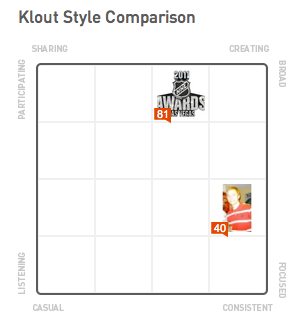By Andrew Gibson
When national baseball editor Rob Neyer joined SB Nation, a sporting news website made up of a community of bloggers, he wrote a column representative of new media.
Keeping SB Nation’s focus on reporter-reader interaction in mind, Neyer wrote:
(screen shot above courtesy of SB Nation)
Sports coverage is just one example of the blurred line between “us” and “them” in the media. Journalists are no longer information gatekeepers. They’re more like ushers, steering people in the direction of reliable reporting.
Media outlets kept this paradigm shift in mind during the 2011 Stanley Cup Playoffs and 2011 NBA Playoffs.
Quickish is a website that combines user tips, social media and online news to give a dynamic picture of the sporting world. A search of “Stanley Cup” gives results ranging from a Vancouver rioter holding a bloodied mannequin leg to an in-your-face comment from ESPN reporter Jackie MacMullen:
(screen shot above courtesy of Quickish)
Quickish editors verify all of the tips they receive, according to the website. But that doesn’t prevent a colorful variety of multimedia from filling the home page.
People who were previously news consumers have turned into news creators largely because information is available more quickly than ever. Many people want news now so they can have a conversation about it … now.
And the NBA knows it.
The league capitalized on the need for immediacy during the 2011 season, particularly during the playoffs. Mashable published a story on June 22 after talking with Bryan Perez, NBA Digital general manager. Reporter Lauren Drell learned the following about the league’s mobile shift:
(screen shot above courtesy of Mashable)
The NBA Game Time 2010-2011 app, which gives real-time score updates and allows users to check stats and stream video, was the most popular iTunes sports app in the U.S. as of June 22, according to the iTunes Store Top 10 Apps.
NHL techies have also upped their digital efforts. NHL GameCenter 2010 is the fifth most popular U.S. sports app and the second most popular Canadian sports app, according to iTunes.
The two apps are popular but not as popular on the Android. NBA GameTime 2010-2011 was No. 24 on Android Market’s top free sports apps as of June 23. NHL GameCenter 2010 was No. 38.
An NHL representative said in an email to ONA Mizzou blogger Andrew Gibson that the league could not disclose how many total GameCenter downloads there had been in the 2010-2011 season. But according to the league website, the number exceeded 500,000 in the first month alone.
Interaction and immediacy are redefining sports journalism. Twitter combines both of these traits by leveling the playing field between professional and citizen journalists and by allowing for instant publishing.
@NBA tweeted 63 times on the day of Game 6 of the NBA Finals, which ended up being the final game of the series. Tweets had reminders about the game, player updates, links to videos, play-by-play updates and quotes from post-game press conferences.
The account retweeted only three users, two of which — @EKS_MavsNBA and @WindhorstESPN – are sports writers — and one of which — @NBAHistory — is affiliated with the league.
@NHL tweeted 81 times on June 15, the day of the final Stanley Cup game. The tweets were similar to the @NBA tweets.
Except for one notable difference. @NHL retweeted and replied to followers much more frequently. Retweets included hockey lovers . . .
NHL players. . .
and sports writers. (The screenshots were taken from the users’ Twitter profiles. Click the image to visit the page.)
But despite more interaction, @NHL had fewer than one-fourth of the followers that @NBA did as of 2:30 a.m. EST on June 22.
Is this digital evidence of the widespread hunch that Americans follow basketball more closely than hockey?
Scores from Klout, which measures online influence, may paint a more accurate picture. @NBA had a score of 85 as of 2:30 a.m. EST on June 22, four points higher than @NHL.
Klout calls @NBA a “Pundit”. . . (screen shot below from Klout)
whereas it says @NHL is a “Taste Maker”(screen shot below from Klout).
These titles aren’t far apart from one another on the Klout Style Comparison tool . . .
(@NBA screen shot courtesy of Klout)
(@NHL screen shot courtesy of Klout)
… But they’re different nonetheless.
True, years of TV ratings indicate that basketball is the more popular sport. But it’s possible that some people might follow @NHL because they like more interaction. And some might prefer the more top-down of approach of @NBA.
These are the kind of topics sports media professionals will have to keep in mind as online journalism grows.
So, ONA Mizzou’ers, what’s next?











No comments:
Post a Comment